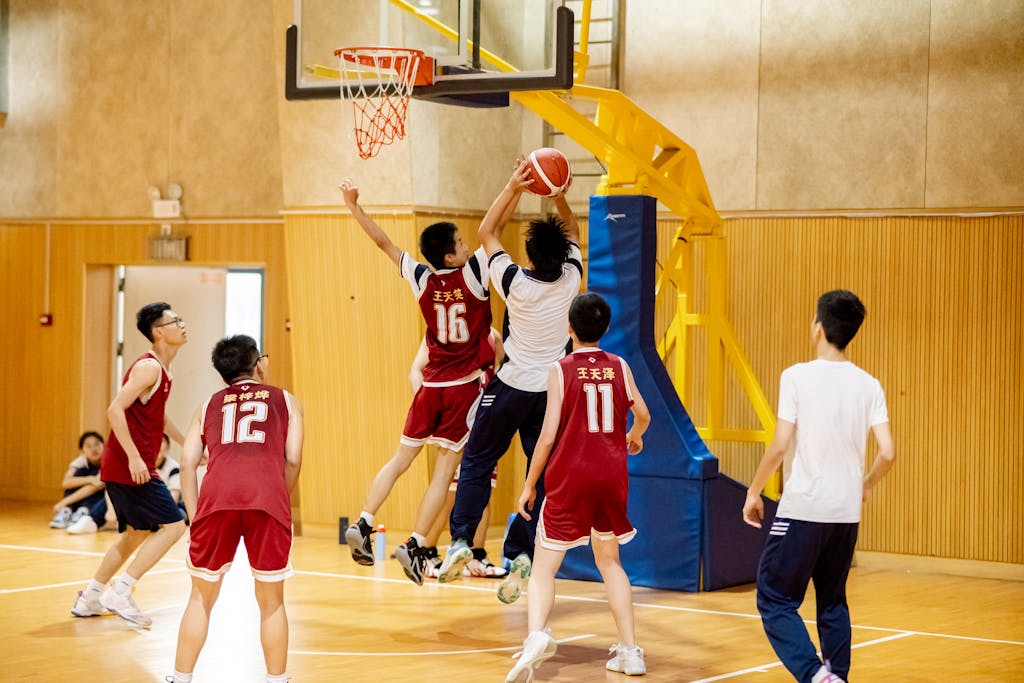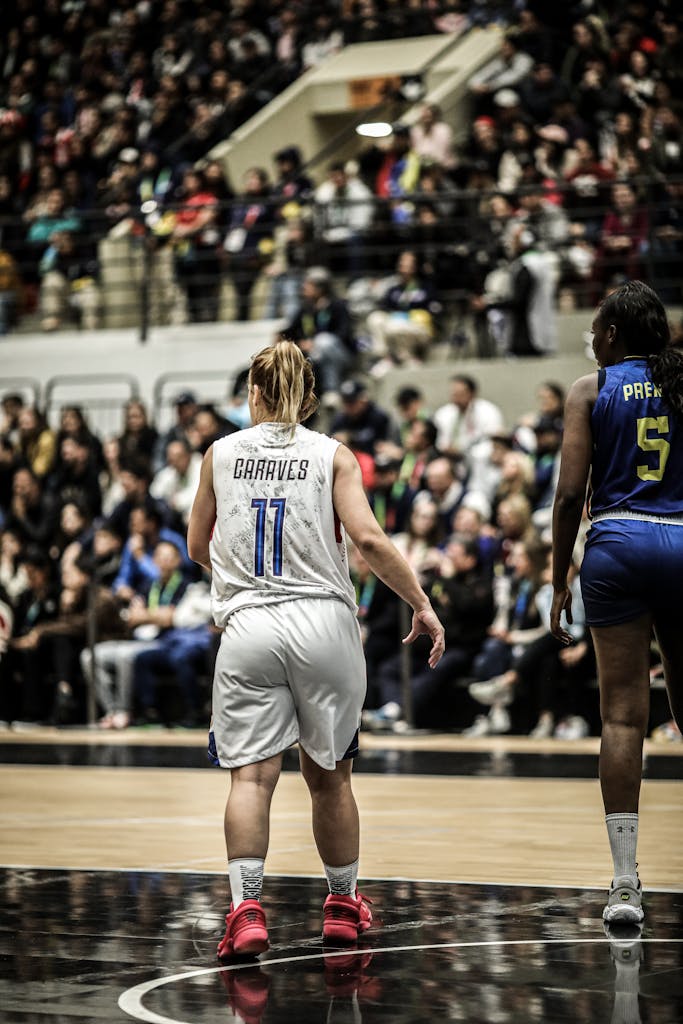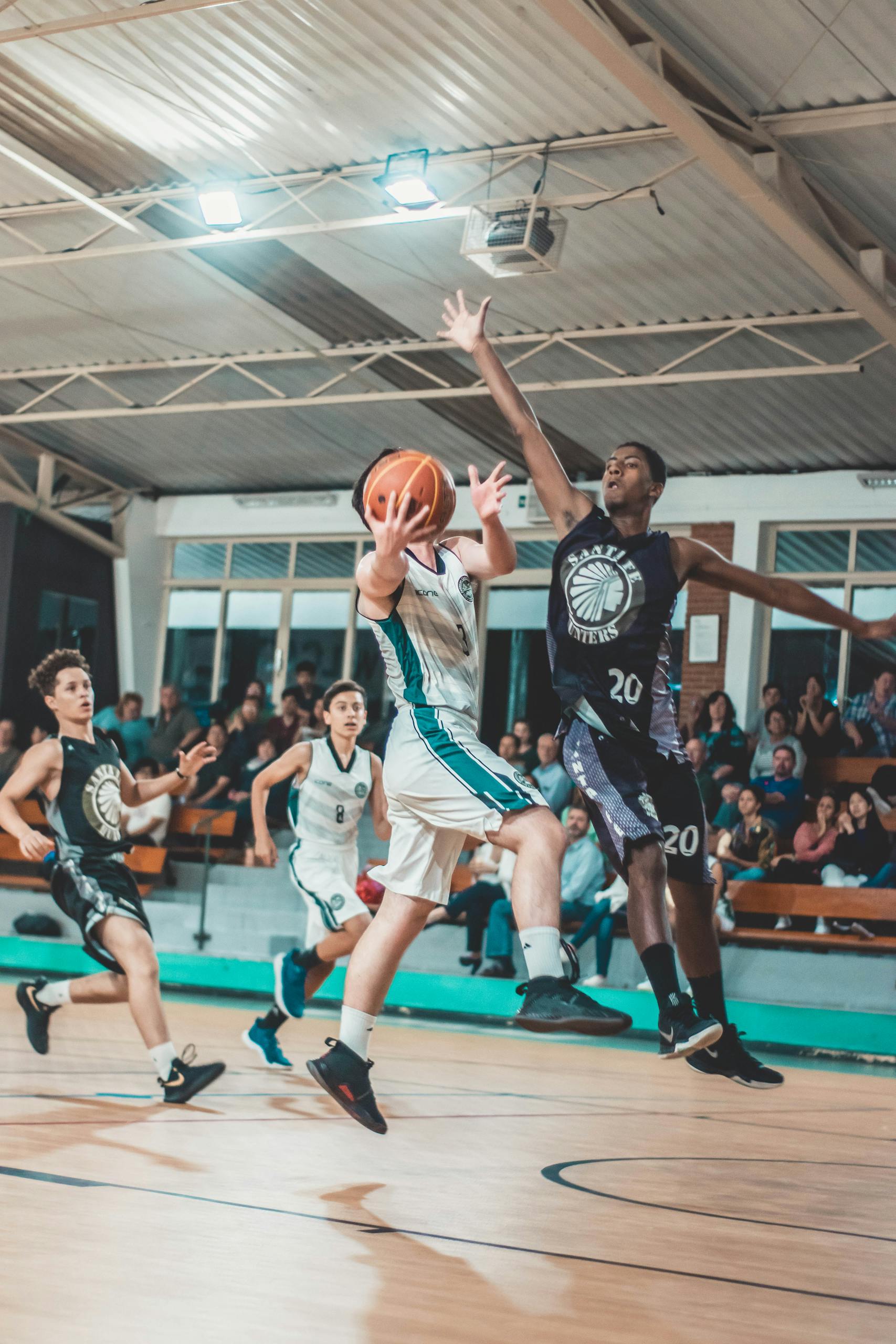Basketball’s fast-paced nature in 2025 demands smart defenses, and switching 2nd is a tactic stealing the spotlight. Used by top teams like the Golden State Warriors, it’s a pick-and-roll defense where the second defender—usually covering the screener—switches to guard the ball handler, while the original defender takes the screener. This quick swap throws off offenses, cutting down open shots and drives. It’s perfect for today’s positionless game, where players like LeBron James or Luka Dončić can do it all.
Switching 2nd isn’t just for pros; high school and college teams use it to counter speedy guards or bigs who pop for threes. This guide breaks down what it is, why it works, how to pull it off, and how to fix common hiccups. Whether you’re a player, coach, or fan, you’ll learn practical steps to make this defense your own. It’s about teamwork, timing, and smarts—qualities that win games. Let’s dive in and see how switching 2nd can level up your team’s defense and keep opponents guessing. Ready to lock down the court?
What is Switching 2nd in Basketball?
Switching 2nd is a defensive move that shakes up pick-and-roll plays, a staple of modern basketball offenses. When an opponent sets a screen, the defender guarding the screener (the second defender) switches to the ball handler, while the on-ball defender slides to cover the screener. It’s a slick way to stop easy baskets, like lobs or open threes.
Born from the switching defenses of the 2010s, teams like the Miami Heat perfected it to handle stars like Stephen Curry. Blogs and X posts call it a must-know for 2025’s game, where versatility rules. It’s not just about bigs and guards; it’s about players who can guard anyone. Analytics from Synergy Sports show it cuts pick-and-roll scoring by about 10%. You need sharp communication and quick feet, but when done right, it’s a game-changer. This section digs into the nuts and bolts—how it started, how it works, and why it’s a go-to for smart teams. Let’s unpack it.
Definition
In a pick-and-roll, the offense wants to create confusion, but switching 2nd flips the script. The second defender, usually a big guarding the screener, jumps to the ball handler—say, a quick guard like Damian Lillard. Meanwhile, the on-ball defender takes the screener, preventing rolls to the basket. It’s a fast swap, aiming to deny open shots or drives. The goal? Keep the ball in front and force a tough pass or reset. It works best with players who can guard multiple positions, as mismatches can happen. You’ll see it in clutch moments, like late in NBA games, where stopping a star is key. It’s simple but needs practice to nail the timing.
Historical Context
Switching defenses took off in the 2010s when teams like the Warriors faced spread offenses with lots of threes. Switching 2nd evolved to counter pick-and-rolls, especially against shooters like Klay Thompson. By 2018, it was a playoff staple—think Houston vs. Golden State. Data shows it lowered points per possession by 10-15%. College teams like Villanova adopted it, and FIBA squads use it for international play. X discussions highlight its rise with positionless players, making it a 2025 essential. It’s less about size and more about smarts, reshaping how defenses operate.
Core Principles
Switching 2nd thrives on three things: communication, timing, and trust. Players must call out switches—yelling Switch! or using hand signals—to avoid mix-ups. Timing matters; the second defender steps up early to block the ball handler’s path, while the other slides fast to stop rolls. Trust is huge—players need confidence their teammates won’t leave them stranded. It’s best for versatile lineups, like small-ball teams, where anyone can guard anyone. Mistakes mean open shots, so practice is key. It’s about staying tight and moving as a unit, like a dance.
When It’s Used
You’ll see switching 2nd in high-stakes moments—late games, against star-heavy teams like the Mavericks, or when traditional defenses like hedging fail. It’s great for stopping pick-and-pop threes or lobs to bigs. NBA teams use it in crunch time; college squads like Baylor deploy it against guard-driven offenses. It’s less common early in games to save energy but shines when you need stops. Analytics favor it for teams with switchable players, reducing open looks by 12%. It’s a tactical weapon for smart coaches.
Benefits of Switching 2nd

Why bother with switching 2nd? It’s a defensive powerhouse that messes with offenses and boosts your team’s flexibility. It stops easy baskets by closing gaps fast, forcing opponents to rethink their plays. In 2025, with offenses leaning on pick-and-rolls and three-point shooting, it’s a must.
It lets players guard beyond their usual roles, perfect for today’s do-it-all athletes. Teams like the Celtics use it to shut down shooters, and stats show it cuts scoring chances significantly. Plus, it builds team chemistry—nothing says trust like a well-executed switch. This section covers why it’s worth learning and how it can give your squad an edge, whether you’re in the NBA or a local rec league. Let’s see what makes it so effective.
Disrupting Offense
Switching 2nd throws a wrench in the offense’s plans. By swapping defenders, you block the ball handler’s drive or force a tough pass. Synergy Sports data shows it reduces pick-and-roll efficiency by 15%, making shooters hesitate. It’s great against stars who love screens, like Trae Young, as it denies their rhythm. The offense often resets, eating clock time. In clutch moments, this disruption can force turnovers or bad shots, giving your team the ball back. It’s a simple way to gain control.
Versatility Boost
This tactic shines in positionless basketball. Guards can cover bigs, and bigs can step out on guards, thanks to switching. It’s ideal for lineups like the Warriors’ small-ball, where players like Draymond Green guard anyone. It lets you adapt to multi-skilled opponents without changing personnel. Practice makes players comfortable in any matchup, boosting confidence. X posts from coaches note it’s a must for teams with athletic, switchable rosters, making your defense unpredictable and tough.
Reducing Open Shots
Switching 2nd closes gaps fast, cutting off open threes or lobs. NBA stats show it reduces open shots by 12% compared to traditional defenses. Against teams like the Bucks, who space the floor, it prevents easy looks. The second defender sticks to the ball handler, while the other covers the roll man, keeping both in check. It’s a wall against pick-and-pop plays, forcing contested shots or passes, which your team can intercept.
Team Cohesion
Executing switches builds trust. Players rely on each other to call out moves and cover gaps. Loud arenas test this, so teams practice vocal cues like Switch! or hand signals. It fosters chemistry, as seen in teams like the Heat, where constant communication wins games. Drills reinforce this bond, making your defense a unit. Players feel connected, knowing their teammate has their back, which lifts morale and performance.
How to Execute Switching 2nd Effectively
Pulling off switching 2nd takes practice, but it’s doable with the right steps. It’s all about moving as a team, talking fast, and staying sharp. You need to know when to switch, how to position yourself, and what each player does. NBA teams drill this relentlessly, and even high school squads can master it with effort. It’s not just for pros—any team can use it to shut down opponents. This section gives you the playbook: from communication to drills, we’ll cover how to make it work on the court. Get it right, and you’ll stop offenses cold. Let’s break down the keys to nailing this defense.
Communication Basics
Clear calls are everything. Yell Switch! or use a hand signal to alert your teammate. In loud gyms, eye contact or quick gestures work. Practice this in scrimmages—everyone must hear or see the cue. Missed calls mean open shots, so be loud and early. Teams like Gonzaga use pre-game signals to stay sharp. Check X for clips of pros calling switches. It’s simple: talk fast, act faster, and trust your partner.
Positioning and Timing
The second defender steps up before the screen hits, cutting off the ball handler’s path. Stay low, hands active, to block drives. The on-ball defender slides to the screener, staying between them and the basket to stop rolls. Timing is critical—too early, and the offense adjusts; too late, and they’re open. Practice 2-on-2 drills to get the rhythm. Watch NBA film of switches to see how pros move. It’s about staying tight and quick.
Player Roles
Guards need speed to recover after switching onto bigs; bigs need agility to handle guards. Versatile players like Jayson Tatum excel here. Train guards to fight through screens and bigs to move laterally. Everyone must be ready to guard any position. Drills like 1-on-1 matchups build this. Coaches on forums stress teaching players to read screens early. It’s about confidence in any matchup, making your team adaptable.
Practice Drills
Shell drills are gold—set up 4-on-4, focus on switching every screen. Try 3-on-3 switch simulations to mimic game speed. Use film study to spot pick-and-roll patterns; NBA teams do this weekly. Run 2-on-2 reps where players call switches and adjust. Add cones to practice angles. X posts from coaches share drill videos—search basketball switch drills. These build muscle memory for seamless execution.
Challenges and Limitations
Switching 2nd isn’t perfect. It can backfire if you’re not ready, leaving your team exposed. Mismatches happen, like a slow big on a quick guard. Communication slips in loud games can open lanes. Tired players struggle with the high-energy moves, and smart offenses exploit switches with quick passes. NBA stats show 20% of switches lead to mismatches, so it’s not foolproof. This section digs into what can go wrong and why, so you can prepare and avoid pitfalls. Knowing the limits helps you use it smarter.
Mismatches
Switching can stick a center on a guard, like Nikola Jokić vs. Kyrie Irving. The guard drives or shoots before help arrives. Stats show mismatches occur in 20% of switches, leading to 1.2 points per possession. Train bigs to move laterally and guards to fight rolls. Use show and recover to delay the ball handler. It’s tough but manageable with practice and smart rotations.
Communication Breakdowns
Missed calls kill switches. In noisy arenas, players miss Switch! shouts, leaving shooters open. Practice silent cues—hand waves or nods. Pre-game signals, like the Heat use, help. If one player hesitates, the defense cracks. Run loud scrimmages to simulate chaos. X clips show pros flubbing this, costing points. Clear, constant talk or signals prevent these breakdowns.
Fatigue Factor
Switching is intense—constant movement wears players out. Late in games, tired defenders lag, giving up easy baskets. Teams like the Lakers sub fresh legs to counter this. Run sprint-switch drills to build stamina. Limit switches early to save energy for crunch time. Data shows fatigued teams allow 10% more points post-switch. Rest and rotation are key to staying sharp.
Countering Smart Offenses
Clever teams like the Nuggets exploit switches with re-screens or quick passes. Elite passers like Jokić find open men fast. Study film to spot these tricks—X has breakdowns of playoff plays. Train defenders to anticipate slips or pops. Target weaker offensive players for switches. It’s a chess match; preparation and scouting make your defense tougher.
Strategies to Overcome Challenges
Switching 2nd has hurdles, but smart strategies can smooth them out. From handling mismatches to keeping energy high, there are ways to make this defense bulletproof. It’s about preparation, training, and reading the game. Teams like the Raptors use these tricks to stay solid. This section shares practical fixes to keep your switches tight and effective, no matter the opponent. Let’s dive into how to beat the challenges and keep your defense locked in.
Handling Mismatches
To fix mismatches, use show and recover—the second defender steps up to slow the ball handler, then retreats fast. Train bigs for perimeter defense with lateral drills. Guards should crowd rollers to buy time. Rotates help defenders to cover gaps, like the Celtics do. Practice 1-on-1 scenarios to build confidence. Film study helps spot mismatch risks. It’s about quick adjustments to keep the offense guessing.
Improving Communication
Silent cues save games in loud arenas. Use hand signals—pointing or waving—for switches. Practice in noisy gyms to mimic real games. Pre-game huddles set signals, like Gonzaga’s system. Run 3-on-3 drills with music blasting to force non-verbal cues. X posts show college teams using wristbands for codes. Clear signals and constant talk ensure everyone’s on the same page.
Managing Fatigue
Switching tires players, so rotate fresh defenders, especially late. Use timeouts to rest stars, as the Lakers do. Run sprint-switch drills—10 reps of full-court switches—to build endurance. Limit switches in early quarters to save energy. Hydration and conditioning matter; tired players allow 10% more points. Plan rotations based on game flow to keep legs lively.
Reading Opponents
Smart offenses counter switches with slips or passes. Study film—NBA League Pass has great clips—to spot patterns like re-screens. Target weak passers for aggressive switches. Use analytics to find opponents’ pick-and-roll tendencies; Synergy Sports offers this. Practice defending slips in 4-on-4 drills. X breakdowns of Jokić’s plays show how to anticipate moves. Scouting gives you the edge.
Real-World Applications and Examples
Switching 2nd isn’t just theory—it wins games. From NBA playoffs to high school courts, teams use it to stop big plays. It’s adaptable for any level, with pros adding complex twists and amateurs keeping it basic. This section looks at real examples, from Warriors’ playoff runs to college squads, and tips for teaching it to younger players. It’s about seeing the tactic in action and making it yours.
NBA Case Studies
In the 2018 playoffs, the Warriors used switching 2nd to stifle James Harden’s Rockets. Draymond Green switched onto guards, forcing bad shots. Data showed Houston’s pick-and-roll points dropped 15%. The Heat used it in 2020 against Boston, limiting Jayson Tatum’s drives. Watch clips on NBA.com or X for examples. It’s a clutch tactic for stopping star-driven offenses in big moments.
College and Amateur Use
College teams like Baylor use switching 2nd against guard-heavy squads, cutting open threes. It’s simpler for amateurs—focus on basic switches. High school coaches run 2-on-2 drills to teach it. It works for teams with versatile players, even without NBA athleticism. X posts from coaches share drills for mid-level teams. It’s effective and builds defensive confidence.
Youth Coaching Tips
For kids, keep it simple. Teach switch calls with 2-on-2 games—yell Switch! and swap. Use cones to mimic screens. Focus on stance and hustle, not complex reads. Reward communication to build habits. Youth coaches on forums suggest short, fun drills to keep engagement. It teaches teamwork early, setting kids up for higher levels.
Adapting for Levels
Pros use switching 2nd with layers—fake switches or traps. Amateurs stick to basics: call, swap, stay tight. High school teams focus on positioning; NBA adds film study for counters. Adjust based on skill—pros handle mismatches, kids need help rotations. X clips show variations across levels. Tailor drills to your team’s ability for best results.
Conclusion
Switching 2nd is a defensive gem that shuts down modern offenses, from NBA stars to high school shooters. It’s about quick swaps, loud calls, and trust, turning chaos into control. With practice, any team can master it, cutting scoring chances by 10-15%. Challenges like mismatches or fatigue are real but fixable with drills and smarts.
From Warriors’ playoff wins to youth courts, it’s a tactic that adapts and delivers. Coaches, get your team running shell drills; players, work on versatility. Study film on NBA.com or X to see it shine. In 2025’s fast game, switching 2nd keeps you ahead. Grab a whistle, hit the court, and make this defense your team’s secret weapon. It’s time to lock down and win!






